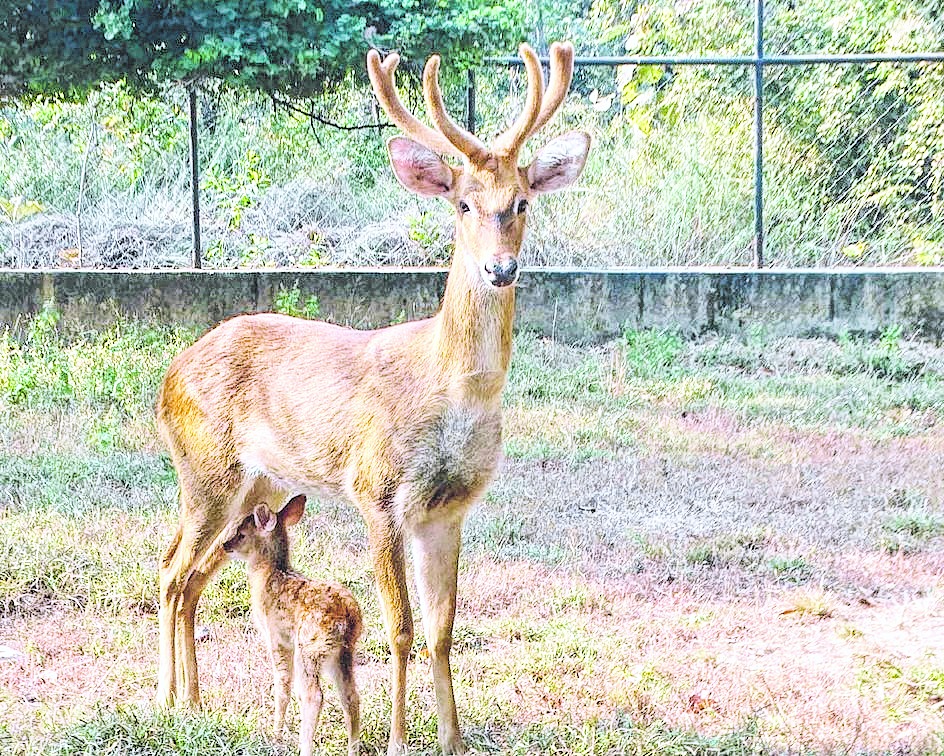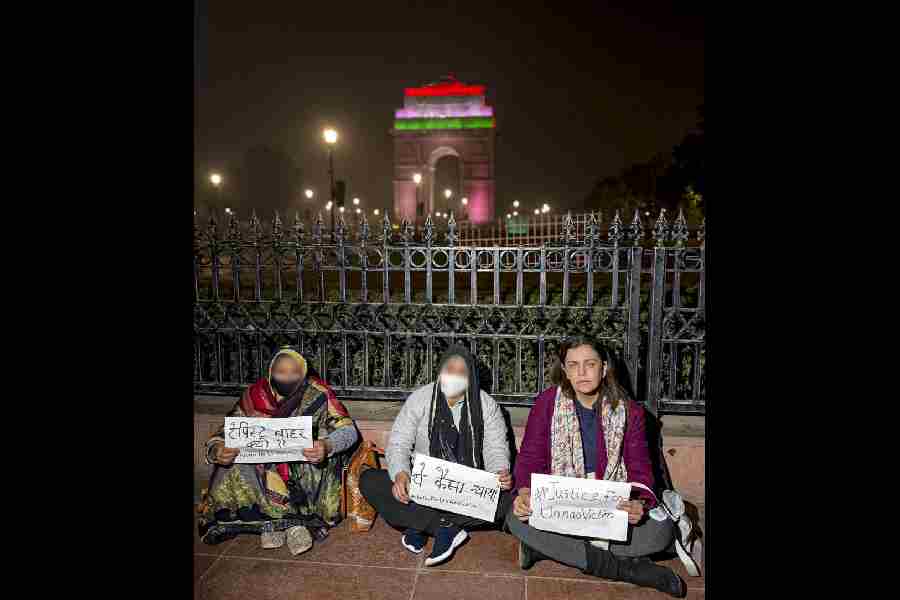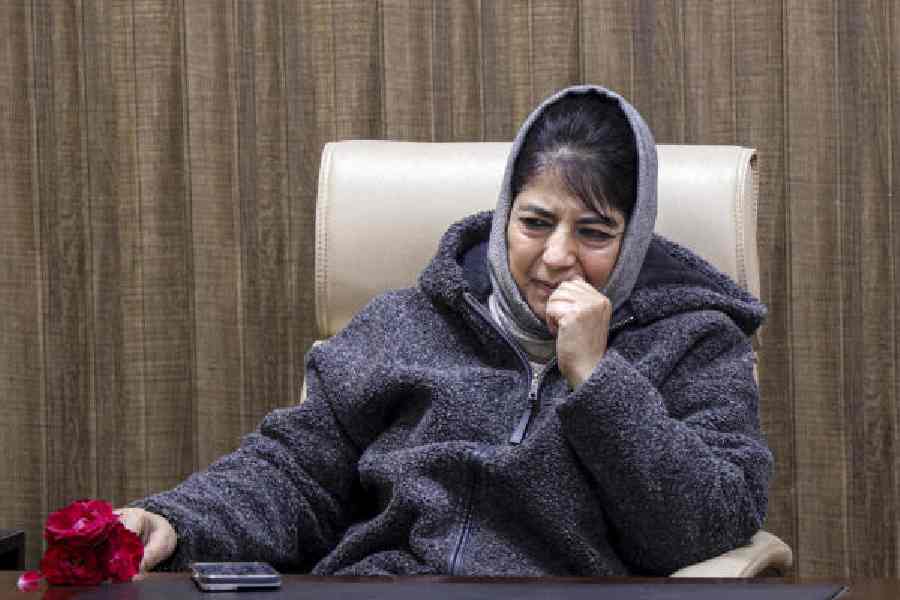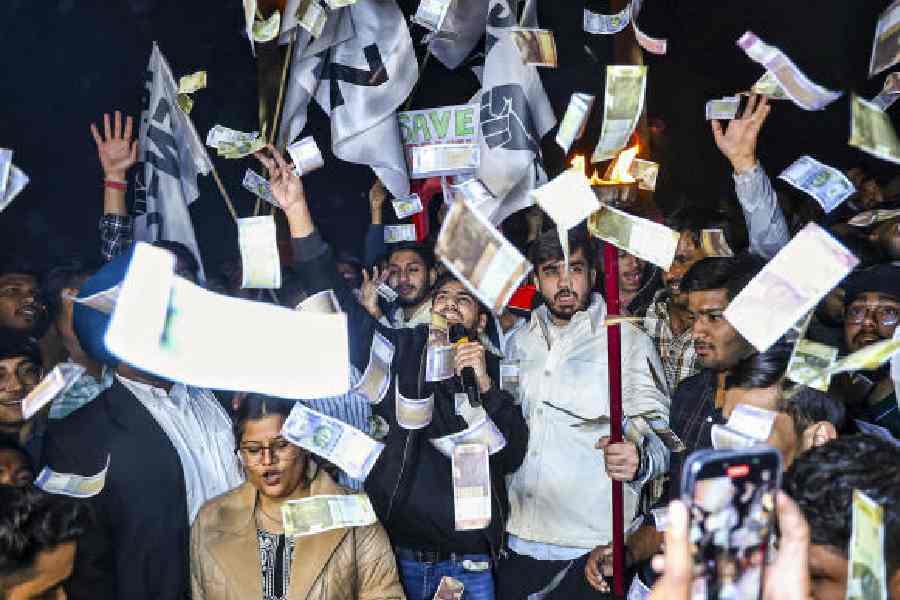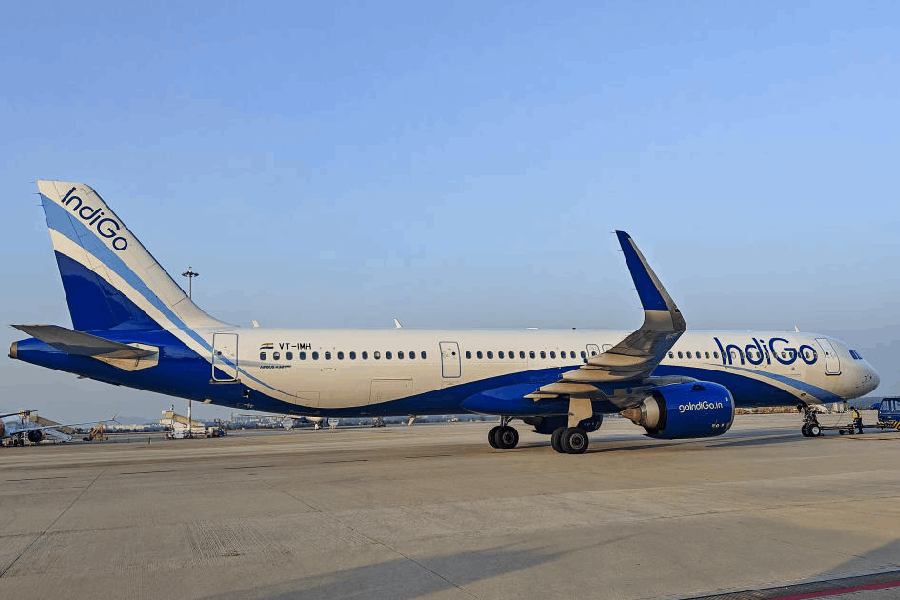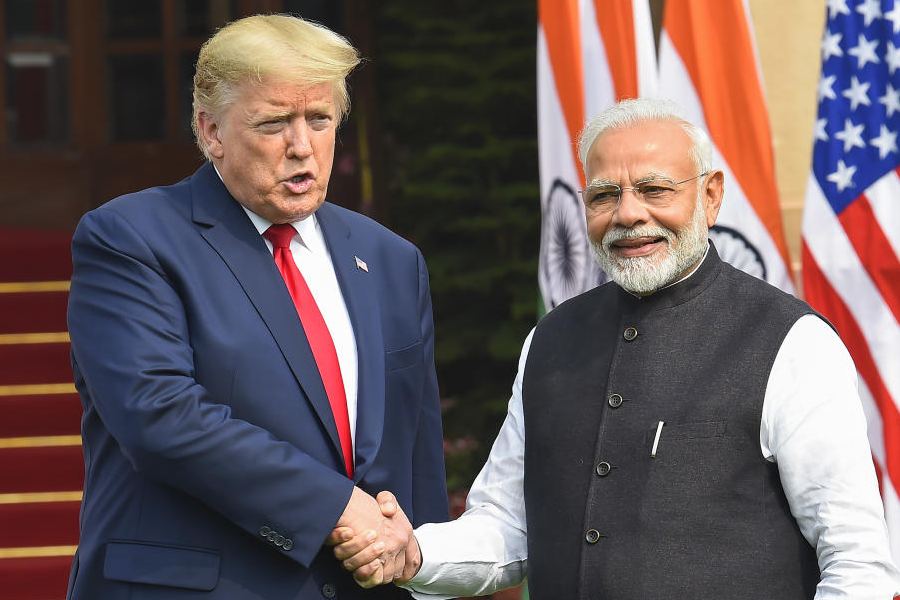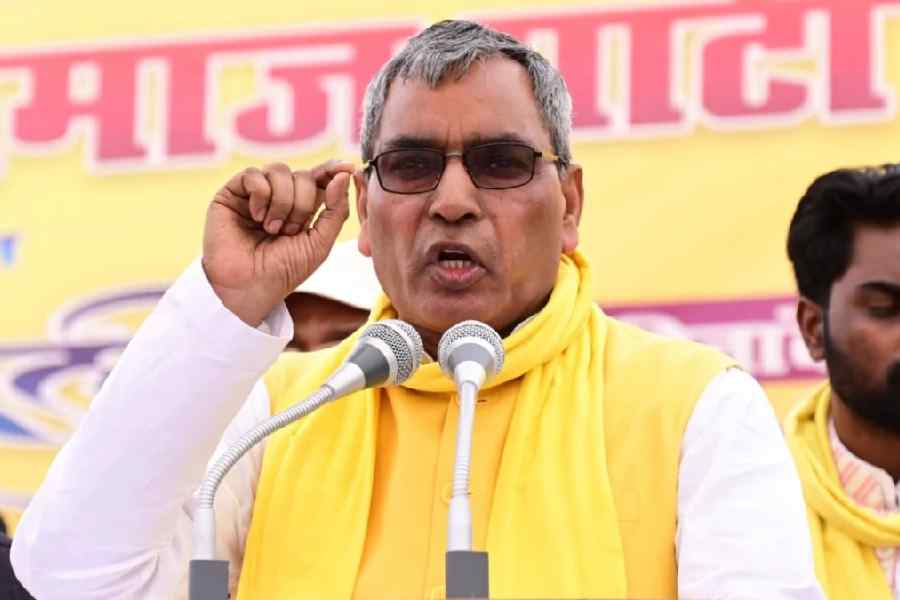
Imphal, May 12: There's good news afloat at the world's only floating national park. The Sangai deer population at Keibul Lamjao National Park in Manipur has gone up in the last three years.
A three-day census carried out by the wildlife wing of the state forest department in March and April this year found 260 Sangai - up by 56 since 2013.
The exercise was supported by the Wildlife Institute of India, Manipur University, non-government organisations, wildlife activists and local clubs.
The survey report, released by forest minister Irengbam Hemochandra Singh today, puts the number of stags in the park at 75, hinds at 127 and fawns at 58.
Shambu Singh, additional chief secretary in charge of the forest and environment department, said the Sangai population recorded during the survey was not the exact population. "It is an estimation. However, the chances of error in the head count is minuscule because we used modern technologies and new methods," he added.
Keibul Lamjao, the 40 square km sanctuary floating on the Loktak lake, is the last remaining natural habitat of the Sangai, the world's most endangered deer species. The brow-antlered deer ( Cervus eldi eldi) live on the floating bio-mass locally known as phumdis. The park is spread over the three valley districts of Bishnupur, Imphal West and Thoubal.
The survey also found the park home to 276 hog deer. The census, however, did not cover all the animal species of the park due to limited resources.
"The sex ratio of both the Sangai and the hog deer are indications of a very healthy breeding population of the species in the park," the report said.
The minister and forest officials attributed the rise in the population of Sangai to "intervention" programmes taken up by the department's wildlife wing.
The principal chief conservator of forests, P.N. Prasad, said the dependence on the sanctuary of residents living around the park for livelihood had come down considerably after the wildlife wing took up measures.
He said the state government had given financial assistance to farmers living around the park to find alternative means of income.
Earlier, the villagers used to extract edible vegetables from the park, which is also food for the Sangai and other wild animals.
"We have also asked the women living around the park to form self-help groups. We will provide financial assistance ranging from Rs 30,000 to Rs 50,000 to each group. With this amount, the women can find other avenues for earning income," Prasad said.
The state government is also planning to develop eco-tourism inside and outside the park, which can help the residents earn money.
"We are preparing a report. We will approach the tourism ministry, North Eastern Council and the DoNER ministry for developing eco-tourism infrastructure in and around the park. The Centre is supporting us," Prasad said.

